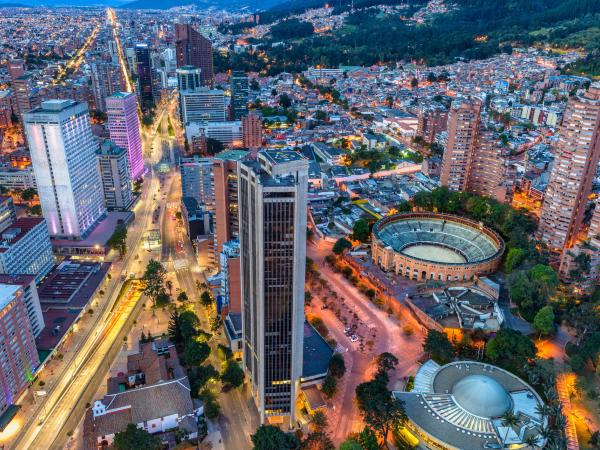Bogotá will once again have a real estate census to help when planning the city. In the last study, the city appreciated 5.6%. Olga Lucía López Morales, director of Cadastro Bogotá, spoke with Portafolio about this topic.
What are you looking for with this new real estate census?
For Bogotá, it is important to have updated cadastral information that contributes to planning and decision-making by the different entities and citizens.
(Read: Scientists devise a system to design buildings ‘ultra-resistant’ to disasters).
Cadastro Bogotá is the entity in charge of capturing, integrating and arranging the information. To update it, the real estate census is carried out annually, this implies a visit by the entity to the properties that have presented physical changes and that are not reflected in the cadastral base.
A group of technicians, property recognizers, will tour the city’s neighborhoods, in order to identify the changes that have occurred on the local properties, how many have grown, in which sectors, if there have been new constructions or demolitions, to update information related to land and construction areas, uses and destination, among other data.
It is believed that this exercise will only be to increase taxes, what can we say?
The cadastral appraisal is the taxable base of the property tax, based on this information the District Treasury Secretariat applies the rates and determines the payment that every owner or possessor must make on the real estate, being one of the main sources of resources for the urban Development. Hence the importance of the technical exercise carried out by the entity reflecting reality in its physical, legal and economic aspects.
How will it help plan the city?
With the data we collect from the census, we not only know how much Bogotá has grown, it helps us identify in which locations more schools, hospitals, green areas, parks, roads are needed and optimize public services.
(Also: Water rationing in Bogotá: planned decisions?).
And by type of property?
The historical information from the CIB allows us to identify a trend in the increase in apartments with sizes up to 40 m2; By 2024, 52% of new apartments are within this range, while ten years ago (in 2014) the share was 10%.
Horizontal Property (PH) continues to increase its participation in the property base, going from 67.8% to 68.3%; In contrast, the participation of properties in non-horizontal ownership (NPH) went from 32.2% to 31.7%.
What is the value of real estate in Bogotá?
As a result of the technical exercise to determine the cadastral value of the city, this went from $779.1 billion in 2023 to $820 billion in 2024, with an equivalent valuation of 5.26%.
(Read: There were five million internally displaced people in Colombia during 2023).
What are the phases and will we know the results?
The cadastral update includes a set of activities that the entity carries out throughout the year, ranging from the collection of information on the real estate market, pre-recognition activities in the field to identify physical changes, the development of the operation for the visit of the properties (recognition phase), the registration of alphanumeric and geographical information in the cadastral database and the calculation of the cadastral value through different methods. For this year, the entity has already begun tours of the different neighborhoods of the city: the updated base will be put into effect as of January 1, 2025.
Bogotá grew to 2.8 million properties
Today the city has a total of 2,817,536 properties, which total 302 million m2. Stratum three, the one with the greatest participation in the city’s properties (32%), registered the greatest variation of 2.7% compared to the previous period; In the other strata, the strata also presented positive variations, except for stratum 1, which had a slight reduction of 1%.
With the renewal of the cadastral base for validity 2024 43,590 new properties (residential and non-residential) were integrated into the city inventorya size larger than the town of Los Mártires, which currently has 39,214 properties.
Bogota
The built area of the city went from 299.5 million square meters to 302.9 million square meterswith an annual variation of 1.2%.
By locality, the greatest growth occurred in Ciudad Bolívar, Suba and Kennedy, with variations of 436,616 m2, 415,745 m2 and 368,216 m2.
PAULA GALEANO BALAGUERA
Portfolio Journalist













Add Comment